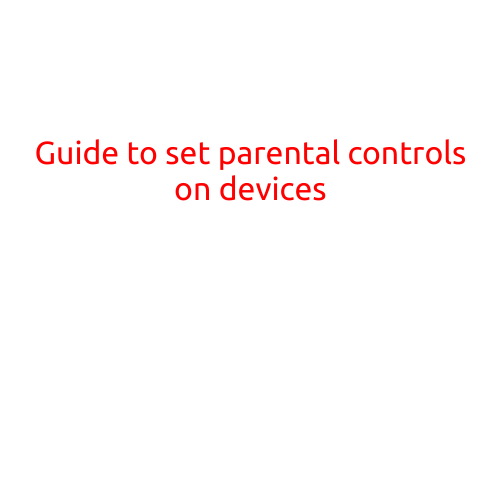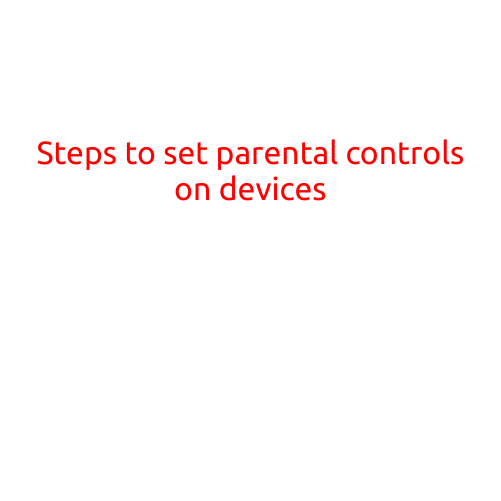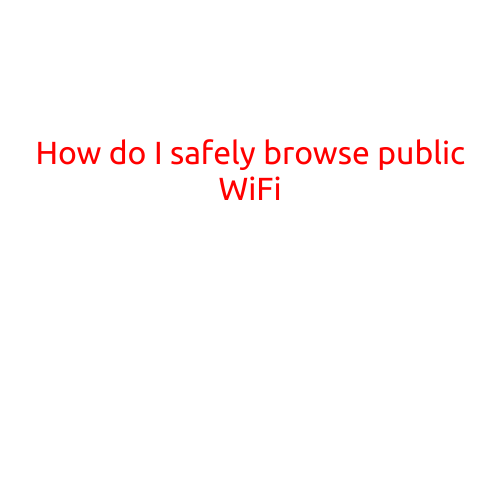
Guide to Set Parental Controls on Devices
As a parent, it’s natural to worry about your child’s online activities and ensure their safety while using devices. With the increasing use of smartphones, tablets, and laptops, it’s essential to set parental controls to limit access to harmful content, prevent online bullying, and monitor their digital footprint. In this guide, we’ll walk you through the steps to set parental controls on various devices, giving you peace of mind and helping you raise a responsible digital citizen.
Why Parental Controls are Important
Parental controls are crucial because they:
- Limit access to inappropriate content, such as explicit images, videos, and websites.
- Block online predators and cyberbullying.
- Monitor online activities, including usage time, apps, and search history.
- Protect children from online scams and fraudulent activities.
- Set boundaries and teach responsible online behavior.
Setting Parental Controls on Various Devices
1. Setting Parental Controls on Android Devices
To set parental controls on Android devices:
- Go to Settings > Google > Family Link.
- Create a family group and add your child as a member.
- Set up a password-protected lock to access family controls.
- Choose which websites and apps are allowed or blocked.
- Set time limits for app usage and online activities.
2. Setting Parental Controls on iOS Devices (iPhone and iPad)
To set parental controls on iOS devices:
- Go to Settings > Screen Time.
- Enable Screen Time Parental Controls.
- Set a passcode to access Screen Time controls.
- Set App Limits to restrict app usage.
- Choose which apps are allowed or blocked.
- Schedule downtime to limit screen time at specific times.
3. Setting Parental Controls on Windows Computers
To set parental controls on Windows computers:
- Go to Settings > Accounts > Family & other users.
- Click on “Add a family member” and create a new user account for your child.
- Set up a password-protected lock to access family controls.
- Choose which websites and apps are allowed or blocked using Windows Defender Family Safety.
- Set time limits for app usage and online activities.
4. Setting Parental Controls on Gaming Consoles (PlayStation, Xbox, Nintendo Switch)
To set parental controls on gaming consoles:
- Follow the manufacturer’s instructions for enabling parental controls.
- Create a child profile and set a password to access controls.
- Choose which games are allowed or blocked.
- Set time limits for gaming and online activities.
Additional Tips
- Monitor your child’s online activities regularly.
- Have open conversations with your child about online safety and digital citizenship.
- Set clear rules and consequences for online behavior.
- Teach your child how to safely navigate the Internet, including using search engines responsibly.
- Consider using third-party parental control software for added protection.
Conclusion
Setting parental controls on devices is a crucial step in ensuring your child’s online safety and well-being. By following this guide, you can set boundaries and limits, monitor online activities, and teach responsible digital behavior. Remember to stay involved and have ongoing conversations with your child about online safety, and create a safe and responsible digital environment for them to thrive.





